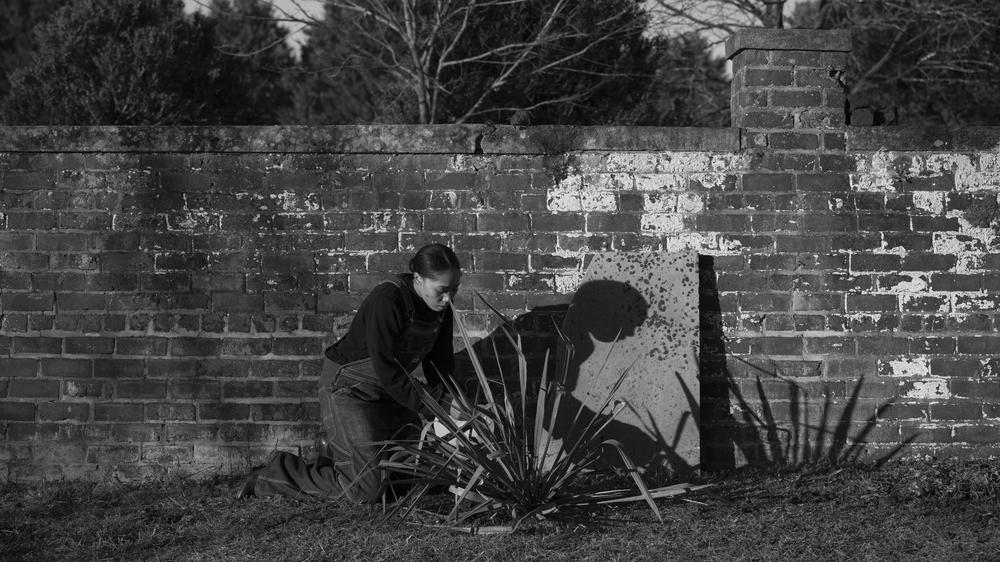
ODE TO SOIL
first performed on December 05, 2020
Meadowcreek Golf Course at Pen Park and Farmington Country Club
performed once in 2020
LARISSA ROGERS
Ruckersville, Virginia
263946605r263946605o263946605g263946605e263946605r263946605s263946605l263946605a263946605r263946605i263946605s263946605s263946605a263946605m263946605@263946605g263946605m263946605a263946605i263946605l263946605.263946605c263946605o263946605m
www.larissamrogers.com
ODE TO SOIL
LARISSA ROGERS
“Ode to Soil” investigates cultural amnesia and what it means to be surviving as a Black person in America. I do this through exploring landscapes and activating the soil in Charlottesville, VA where Black life and histories have been seemingly erased.
The performance begins by visiting my Great-Grandmother’s house in Madison, VA. I dug up her yucca, perennials, and resurrection lilies that have been planted in her yard since the property was granted to the family following emancipation. These resilient plants were commonly used in older African-American and enslaved cemeteries to mark the graves of their loved ones due to the expense of headstones.
As the sun rises, I then take the plants to Pen Park, a former antebellum plantation turned recreation park and golf course. Within Pen Park’s golf course lies a cemetery for the former families who owned the plantation, and surrounding the cemetery are forty-three unmarked slave graves. Without permission, I enter the golf course and plant my Great-Grandmother’s yucca, perennials, and resurrection lilies to mark each grave. With the plants, I then walk to the hanging tree in front of Farmington country club and take the same train tracks John Henry James, a Black man who was falsely accused of raping a White woman in Penn Park, was abducted on before being lynched. I plant a Yucca plant by the hanging tree. I do this in my Grandpa’s old jean overalls, and without permission to be on the property. During the performance, I speak out loud about the hidden histories of the land. I talk about the yucca plant, my family’s associations with these landscapes, and vocalize the stories of my ancestors who lived and died on the soil. I talk about how the soil always remembers, even when it seems like no one else does. I talk about a kind of aliveness Kenvin Quashie describes as “a Black world that surpasses the everywhere and everyway of black death.” After I finish planting, I bless the soil, water the plants, and leave the space.
Planting is used to investigate ideas of labor, resilience, living memorials, and how culture and memory are preserved through intergenerational technologies. The plants offer an alternative version of a monument, one that creates life, while serving as a metaphor for the tendency of our nation to forget it is growing on the institution of slavery and free Black labor.